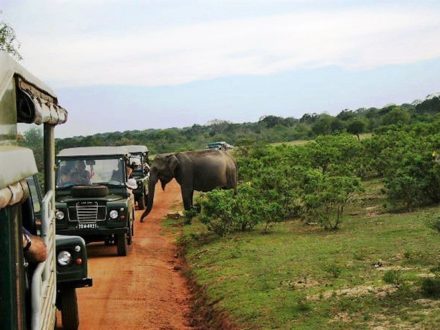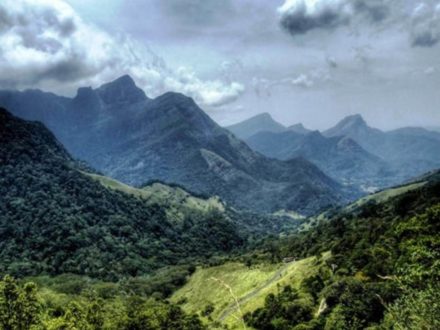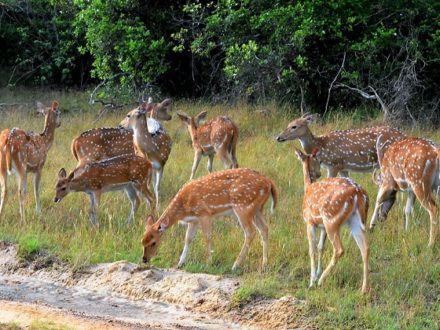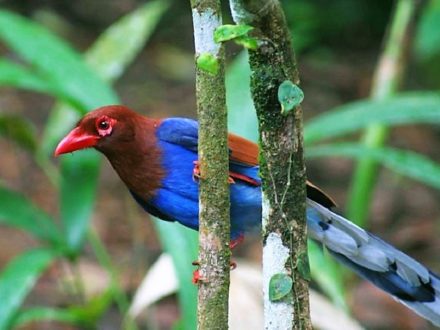
Maduru Oya National Park is a national park of Sri Lanka, established under the Mahaweli development project and also acts as a catchment of the Maduru Oya Reservoir. The park was designated on 9 November 1983. Providing a sanctuary to wildlife, especially for elephants and protecting the immediate catchments of five reservoirs are the importance of the park. A community of Vedda people, the indigenous ethnic group of Sri Lanka lives within the park boundary in Henanigala. The park is situated 288 kilometres (179 mi) north-east of Colombo. The importance of the park’s fauna is its richness, which includes a number of endemic species.
Threatened mammal species include elephant, of which there were 150-200 before the establishment of the park, sloth bear, leopard, and water buffalo. A 2007 study showed that the current elephant population was around 150 to 200. Other mammals are toque monkey Macaca sinica, common langur Presbytis entellus, jackal Canis aureus, fishing cat felis viverrina, wild boar Sus scrofa, Indian muntjac Muntiacus muntjak, spotted deer Cervus axis, and sambar C. unicolor. Small mammals include porcupine Hystrix indica, black-naped hare Lepus nigricollis, Indian pangolin Manis crassicaudata, squirrels, rats and mice. European otter Lutra lutra has also been reported in the park. Maduru Oya National Park is one of the recorded habitats of the grey slender loris Loris lydekkerianus.
Maduru oya national park diverse aquatic avifauna includes painted stork Mycteria leucocephala, white-bellied sea eagle Haliaeetus leucogaster, grey pelican Pelecanus philippensis, great cormorant Phalacrocorax carbo , and little cormorant P. niger. Notable forest species are endemic Sri Lanka junglefowl Gallus lafayetii, the rare broad-billed roller Eurystomus glaucurus (possibly the only dry zone haunt), common tailorbird Orthotomus sutorius, shama Copsychus malabaricus, black-hooded oriole Oriolus xanthornus, and woodpecker Dendrocopos nanus. Endemic red-faced malkoha (Phaenicophaeus pyrrhocephalus) also occurs. The reservoirs harbor several species of bird including Oriental darter Anhinga melanogaster, spot-billed pelican Pelecanus philippensis, Asian openbill Anastomus oscitans, black-headed ibis Threskiornis melanocephalus, and Eurasian spoonbill Platalea leucorodia.
Maduru oya national park reptiles include the Indian star tortoise, common monitor, water monitor, black-tailed python, krait, common cobra (Naja naja), mugger crocodile, and estuarine crocodile. Other reptiles associated with aquatic habits are Indian black turtle and Indian flap-shelled turtle . Of fishes barbs, giant gourami, snakeheads, catfish and exotic tilapia are predominant in the reservoirs.





























